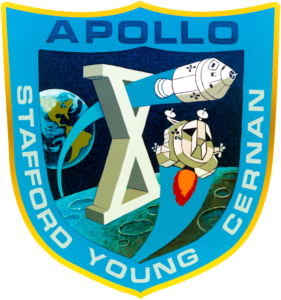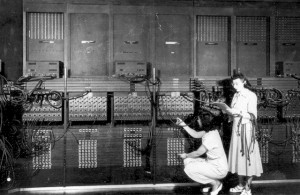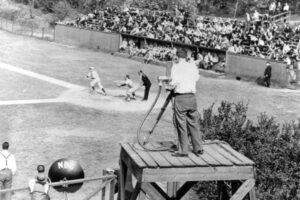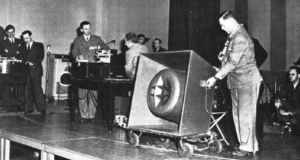Apple III Introduced
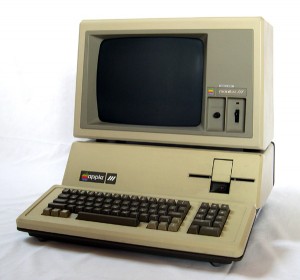
At the National Computer Conference in Anaheim, California, Apple Computer introduces the Apple III. It is the company’s first attempt at a business computer, its first departure from the Apple II architecture, and it will also become Apple’s first real failure. Apple expects the Apple III to be released in July, but in one of the worst cases of delay in tech history, the system wouldn’t reach stores until January. Once released, the Apple III will be plagued by component failures that would ultimately lead to large recalls. The Apple III never recovered from it’s original negative reception and was discontinued by Apple in 1984
Antitrust Suit Filed Against Microsoft
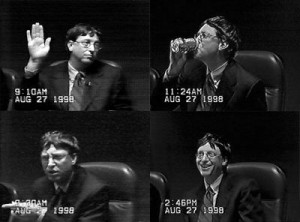
The United States Justice Department and the Attorneys Generals of twenty states plus the District of Columbia file an antitrust lawsuit against Microsoft. The case focuses on Microsoft’s integration of the Internet Explorer web browser into its Windows 98 operating system. The trial becomes one of the most famous events in tech history, eventually resulting in a settlement between the DOJ and Microsoft. In fact, the sanctions levied against Microsoft lasted until May of 2011, almost exactly 13 years after the suit was filed.
Launch of Apollo 10
Apollo 10 launches from the Kennedy Space Center. It would be the final “dress rehearsal” flight to the moon before Apollo 11 would make the first Moon landing two months later. NASA had considered making Apollo 10 the first Moon landing, but mission planners decided that it would be best to have a practice flight where all systems and procedures were tested up to the point where the lunar module would actually make powered descent to the Moon. Apollo 10’s lunar module, given the call sign “Snoopy” would make it to within 15 kilometers of the Moon’s surface, taking pictures of the proposed Apollo 11 landing site and testing the lunar module’s landing radar. It would dock back with the command module, given call sign “Charlie Brown”, after nearly 8 hours in orbit.
Apollo 10 holds some interesting distinctions. It was the first mission to carry a color TV camera so Earth viewers received the first color TV images of the planet. Apollo 10’s crew was the first to successfully shave in space. Apollo 10’s crew also set the record for the fastest speed any humans have traveled relative to Earth. Ultimately, the thorough testing of systems, photographs of the Moon’s surface, and data returned from the Apollo 10 mission cleared the way for Apollo 11 to make the first human landing on the Moon.
Contract Signed to Create ENIAC
The US Army and the University of Pennsylvania sign a contract to develop ENIAC, which would become the world’s first fully electronic computer, making the use of vacuum tubes rather than electromagnetic switches. The Army wanted to use this computer to calculate ballistic firing tables in World War II. However, ENIAC was not completed until after the war was over and went on to solve complex mathematical problems in fields such as atomic energy and rocketry.
First Sports TV Broadcast
NBC carries the first broadcast televised sporting event in history, the second game of a doubleheader baseball game between Columbia and Princeton. Only about 400 TV sets were capable of receiving the transmission, but it was an important first step in the history of televised sports. NBC would later broadcast a major league baseball game in August of that year, a college football game in September, closely followed by an NFL game in October.
Previously Germany had televised parts of the 1936 Olympic games, but TV sets were not available for sale in Germany at the time. Therefore viewing was limited to a number of “public viewing rooms” in Berlin and Potsdam.
First Laser Created
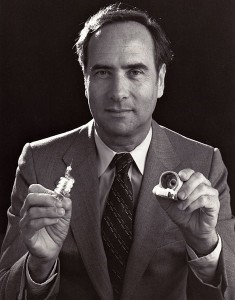
Physicist Theodore Maiman creates the first laser light, using a synthetic-ruby crystal device. He was not the first to develop the theories behind lasers nor first to apply for patents, but he was the first to create an operating laser device. The light produced by this device was not a true beam as we think of most lasers today, but rather a pulse. Other researchers would create the first laser beam soon after.
First Demonstration of Hi-Fi Tape Technology in US
Jack Mullin, an electrical engineer and US Army Signal Corps veteran in World War II, gives the first demonstration of a high-fidelity tape recording in the United States at an Institute of Radio Engineers meeting in San Francisco. He was able to demonstrate that a recorded jazz band sounded virtually identical to a live one during this demo, impressing the many engineers in attendance.
While stationed in England early in the war, Mullin had discovered that German radio was able to broadcast symphony recordings in superior quality to anything he had heard before. He later had the opportunity to examine captured German electronic equipment and discovered the AEG Magnetophon audiotape recorder, which had been in use on German radio since 1941. He received permission to take two of the recorders and blank tape back home after he left the Army in 1946 as “war souvenirs”. He then refined and fitted the German machines with “American electronics”.
In 1947 Mullin would catch the ear of Bing Crosby’s technical producer, who was looking for a way to broadcast Crosby’s recordings in better quality since his show, Philco Radio Time, was losing ratings due to the poor quality of recorded audio at the time. Mullin was brought on as Crosby’s chief engineer and the recordings made by Mullin were a hit with listeners. Crosby invested $50,000 in Ampex, which was at the time was a small 6-person electronics firm working with Mullin to develop commercialized versions of Mullin’s modified Magnetophons. Ampex and Mullin would forever change the recording industry with the Ampex Model 200A, first shipped in 1948. 60 years later at the 50th Grammy Awards, Ampex received the Technical Grammy Award, in recognization for having “revolutionized the radio and recording industries”.
Apple Retail Stores Revealed
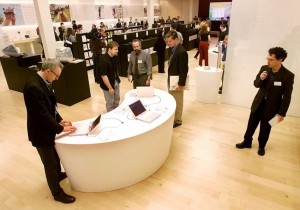
Apple Computer announces plans to operate a chain of retail stores, opening twenty-five retail stores in the United States by the end of the year. Steve Jobs holds a commemorative press event at Apple’s first store in the second level of Tysons Corner Center to make the announcement. The store, along with a second location in Washington, D.C. will open on Saturday, May 19. At the time, Apple’s plan was generally derided by technology “experts” as doomed to failure. On this, their anniversary date, Apple’s retail stores are now considered one of the catalysts to Apple’s tremendous growth.
Skylab Launched
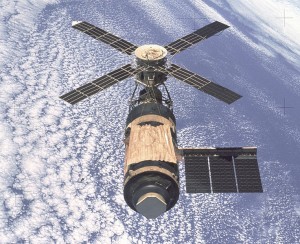
The United States launches Skylab One, its first manned space station. It is the last launch of the Saturn V rocket, and the the largest payload ever launched into space at the time. Skylab will fall back into the Earth’s atmosphere in July 1979.
System 7 Released
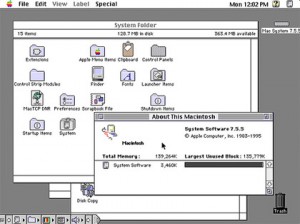
The System 7 operating system for the Macintosh is released, the second major upgrade to the Mac OS since 1984. One of the major features included in System 7 is built-in cooperative multitasking. System 7 also introduces the concept of “aliases”, which will later be copied as “shortcuts” in Microsoft Windows 95. System 7 was the first Mac OS that I personally became familiar with, and it was the foundation of future Mac OS versions until the release of Mac OS X almost exactly 10 years later.

